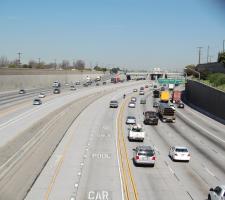
Patrick D Jones is executive director and chief executive officer for IBTTA, the International Bridge, Tunnel & Turnpike Association
A reauthorization bill for transportation came into law in July 2012, rubber stamping federal funding increases through the 2014 financial year, among other things.
The new bill presents the good, the bad and the ugly of transportation infrastructure in the US, writes Pat Jones.
The transportation community worked diligently to educate members of Congress and should be proud of many aspects of the legislation. As with most reauthorization bills, however, there are elements that have potentially negative consequences and elements that raise troubling implications for the future.
In looking at this highway bill and its implications, it’s as important to look at what’s been left out – both good and bad – as it is to look at the actual provisions. For that reason, the following analysis examines the provisions as well as the potentially harmful elements struck from the bill and the potential opportunities that were missed.
The good
One of the most significant measures for the tolling industry is Section 1512, which allows tolling of new capacity on the Interstate system (greenfield) as long as the number of toll-free non-HOV (high occupancy vehicle) lanes does not decrease as a result of the construction. This is a dramatic expansion of opportunities for tolling in the United States as well as a commonsense recognition of the limits of fuel taxes as a revenue source for maintaining and expanding transportation infrastructure.The bill also allows for the conversion of HOV lanes to high occupancy toll (HOT) lanes as a part of the rehabilitation, reconstruction, or restoration of Interstate highways, as well as on non-Interstate facilities. This is in addition to the ongoing ability to convert existing Interstate bridges or tunnels to tolled facilities if they are associated with major reconstruction. At the same time the legislation does prohibit the tolling of HOV vehicles on these facilities.
MAP-21 is silent on the topic of the existing Interstate toll pilot programmes, leaving them to continue until the 2015 end date specified in the previous reauthorization legislation.
Another beneficial area relates to changes in the Transportation Infrastructure Finance & Innovation Act (TIFIA) programme.
MAP-21 dramatically increases the annual funding available for credit assistance from the current funding level of $122 million to $750M in 2013 and $1Bn in 2014. It also removes all subjective evaluation criteria for projects seeking credit assistance and provides funds for eligible, credit-worthy projects on a rolling basis.
The use of tolls and user fees are specifically referenced as approved revenue streams to repay any federal credit assistance provided. In addition to providing project-by-project assistance, the new law allows credit to be provided for a programme of projects through a master credit agreement.
While there are many unanswered questions about these changes – such as how quickly TIFIA funds will be made available, the administration structure and the exact application and approval process – the expanded funding, more objective criteria and overt referencing of tolls as approved revenue streams are all excellent developments for the tolling industry.
On the topic of public-private partnerships, the bill requires the Department of Transportation (USDOT) to compile best practices, develop standard P3 transaction model contracts and provide technical assistance upon request. Once again, this is an acknowledgement of the centrality of alternate revenue streams to the future of infrastructure development in the United States.
When examining the bill language on interoperability, context is crucial. The bill states: “Not later than four years after the date of enactment of this Act, all toll facilities on federal-aid highways shall implement technologies or business practices that provide for the interoperability of electronic toll collection programs.”
While some may be concerned about this statement, the language is significantly different to that offered several years ago, which would have empowered the USDOT to establish interoperability standards and enforce them nationally within two and a half years.
The conference agreement imposes no responsibility of enforcing the declarative statement. This appears to be recognition of
Last but certainly not least in the list of elements benefiting the tolling industry is the omission of several amendments made to the Senate bill, which would have made it less attractive for states to convert existing toll facilities to leased assets operated by concessionaires. If included, these amendments would have reduced federal fuel tax allocations to states awarding toll concessions and prohibited accelerated depreciation and use of bonds for brownfield asset lease deals.
These provisions would have made tolling a less attractive option for funding and financing key surface transportation facilities. The removal of these amendments, therefore, is a net positive for tolling.
The bad
While there is always room for more funding and less red tape, the tolling industry has relatively little to complain about in MAP-21. Our concerns focus on the larger implications of the bill.MAP-21 extends current levels of transportation funding through to the end of 2014. Unfortunately, these allocations are inadequate now and will only become more so as America’s roads, tunnels and bridges continue to age.
Even more troubling, Congress had to find $18.8bn from other ‘creative’ sources just to maintain even that insufficient level of funding. While MAP-21 has made commendable strides in expanding the scope of alternate revenue sources such as tolling, the fact remains that the Highway Trust Fund is unable to meet its financial obligations and the needs of an ageing infrastructure system and growing population are going to become ever more expensive in years to come.
The ugly
The ‘ugly’ implications stem not from MAP-21 per se, but from the ever-growing transportation infrastructure deficit in the United States. By locking in current funding levels, this legislation punts the football down the field, but does not address the major underlying issues.The relatively short time period of the bill – about 27 months – does lend some certainty to planners, builders and investors. But given that the previous highway bill expired almost 33 months ago and the long time horizon involved in planning major construction projects, the lack of certainty that Congress can enact future multi-year transportation bills could continue to impact the planning of major construction projects.
The short duration of MAP-21 means that Congress will have to return to these issues next year following the election and potential changes in the makeup of the House of Representatives and the Senate. MAP-21 makes some good policy changes but fails to address problems for which there are no easy answers. An excellent opportunity exists for tolling supporters to continue making the case for broader and more direct consideration of tolling solutions.
These opportunities for future progress will be among the many topics discussed during IBTTA’s 80th Annual Meeting & Exhibition 9-13 September 2012 in Orlando, Florida. With more than 1000 toll industry professionals from around the globe, this meeting will provide opportunities to learn about best practices in toll operations, management and messaging. We hope to see you in Orlando!
For further info on the 2012 IBTTA Annual Meeting: <%$Linker:
Patrick D Jones is executive director and chief executive officer for IBTTA, the International Bridge, Tunnel & Turnpike Association






